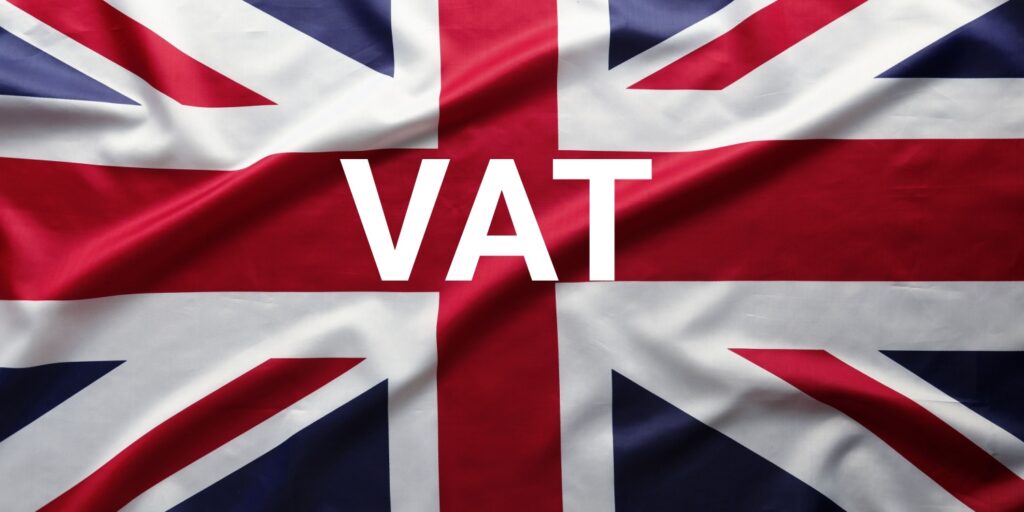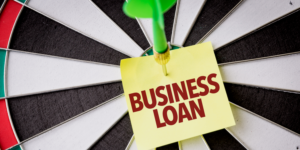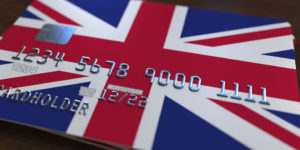Understanding Value Added Tax (VAT) is crucial for business owners. However, this can be a real challenge if you’re unfamiliar with the various VAT terms relating to registration and compliance in the UK.
VAT is a specific type of consumption tax that VAT-registered businesses must add to the price of the goods and services they sell.
Our guide provides an overview of some of the most common VAT terms you’re likely to encounter. Hopefully, this information will make life a little easier as you navigate the endless guidance on the UK VAT system.
1. Accounting period
A VAT accounting period, or VAT period, is the time covered by a VAT Return. It’s usually 3 calendar months, with the deadline for submitting the VAT Return falling 1 calendar month and 7 days after the end of the accounting period.
The rules are different for businesses that use the VAT Annual Accounting Scheme. The VAT accounting period is 12 months instead of 3, and the deadline for sending a VAT Return is 2 months after the end of the accounting period.
2. Acquisitions
Acquisitions are goods that a business brings into Northern Ireland from an EU supplier. You might have to account for VAT in the UK on the acquisition of these goods. However, you can recover the VAT as input tax on your VAT Return, subject to HMRC’s normal rules for reclaiming input tax.
3. De minimis rule
This is one of the VAT terms that causes quite a bit of confusion. The de minimus rule is a principle of partial exemption from UK VAT. It is designed to save small businesses from the need to account for insignificant (‘de minimus’) amounts of VAT incurred (input tax) on costs relating to exempt supplies.
Normally, VAT-registered businesses cannot claim any of this input tax. However, under the de minimus rule, they can recover input tax that would not otherwise be deductible, provided that:
- their exempt input tax amounts to no more than £625 per month on average, and
- the total value of their exempt input tax is not more than 50% of the total input tax incurred in the relevant period
For more information on the de minimus rule, refer to HMRC’s guidance on partial exemption (VAT Notice 706).
4. Distance selling
Distance selling refers to the sale of goods across an EU border where:
- the customer isn’t registered for VAT, and
- the supplier makes or facilitates the delivery of the goods
It applies to businesses that supply and deliver goods from Northern Ireland to a person in an EU Member State, from an EU Member State to a person in Northern Ireland, and between EU Member States
Distance sales customers are predominantly private individuals. However, they may also include small businesses that are not VAT registered, businesses making only exempt supplies, and charities and public bodies.
5. Exports
Exports are goods that businesses supply from England, Scotland, or Wales to customers outside the United Kingdom, or goods they supply from Northern Ireland to customers outside the European Union. The zero rate of VAT normally applies to exported supplies.
6. Input VAT
Input VAT, commonly known as ‘input tax,’ is the VAT you pay when purchasing taxable goods and services.
If your business is registered for VAT in the UK, you can offset the input tax you incurred in the period against the output tax you charged on sales during the same period.
Moreover, you can claim the difference from HMRC if the input tax is more than the output tax.
7. Imports
Imports are goods (and any related costs) your business brings into Great Britain (England, Scotland, or Wales) from suppliers outside the UK, or goods you bring into Northern Ireland from suppliers outside the EU.
Imported goods are usually charged at the same VAT rates that would apply if they had been supplied in the UK. Subject to the normal rules, you can reclaim the VAT you paid on these goods as input VAT.
8. Output VAT
Output VAT, officially known as ‘output tax’, is the tax that VAT-registered businesses charge on the taxable goods or services they sell.
When you register for VAT, you essentially collect this tax on behalf of the government by applying the correct VAT rates to your sales prices.
Output VAT is then payable to HMRC after the end of each accounting period, less any input VAT your business has incurred on purchases from suppliers during the same period.
9. Place of supply
The VAT term ‘place of supply’ refers to the location where a business makes a supply of goods or services and, consequently, where those goods or services are liable to VAT.
There are different rules for working out the place of supply of goods and the place of supply of services.
10. Reverse Charge
The reverse charge relates to the supply of cross-border services from non-UK suppliers to UK businesses, with the exception of exempt supplies.
There is also the VAT domestic reverse charge. This is a procedure designed to combat tax fraud, which shifts the responsibility to report and pay VAT from the supplier to the recipient of the goods or services.
11. Supply
‘Supply’ is one of the easiest VAT terms to understand. It generally refers to the sale of goods or services (including barter). For the purposes of VAT, taxable supplies are the goods or services you sell (supply) in the UK that are not exempt from VAT.
A supply of goods occurs when exclusive ownership of goods passes from one person to another. A supply of services occurs when someone provides a service in exchange for a consideration (i.e. payment; compensation).
Taxable supplies
Taxable supplies include any goods and services on which the standard rate, reduced rate, or zero rate of VAT applies. These are known as standard-rated supplies, reduced-rate supplies, and zero-rated supplies.
Other than exempt supplies, any supply you make is classed as a taxable supply, regardless of whether your business is registered for VAT. However, you don’t need to account for VAT on these supplies if they’re made at a time when you’re not required to register for VAT and you’ve not registered voluntarily.
12. Tax point
The tax point is a VAT term referring to the date when VAT becomes chargeable on a particular transaction. Also known as the ‘time of supply’, the tax point is not necessarily the date when the supply physically occurs. It usually depends on the following factors:
- Whether the business uses accrual accounting (aka invoice accounting) or cash accounting for VAT
- When the business supplies the goods or services to the customer
- When the business issues the VAT invoice to the customer
With cash accounting, the tax point is usually when the business receives payment from the customer. With accrual accounting, the tax point is normally when the business issues the invoice, even if this occurs before or after the supply physically takes place.
You must account for VAT in the VAT accounting period in which the tax point occurs.
13. Taxable turnover
Another VAT term you’ll hear often is ‘taxable turnover’. This refers to the total value of your taxable supplies, including all items you sell that attract the standard rate, reduced rate, and zero rate of VAT.
It doesn’t include income from the supply of exempt goods and services, items ‘out of scope’ for VAT, or the disposal of capital goods.
Your taxable turnover determines whether or not your business must register for VAT and when it is eligible to seek cancellation of registration. You must register if the value of this turnover exceeds the VAT registration threshold in any 12-month period.
14. VAT exempt
A business is VAT-exempt if it only supplies goods or services that are exempt from VAT and/or outside the scope of the VAT system.
These types of business supplies do not attract VAT at the standard, reduced, or zero rates. As such, they do not form part of your taxable turnover for the purposes of VAT.
If everything you sell is exempt or out of scope, you can’t register for VAT or recover the VAT you incur on business purchases and expenses.
You can apply for VAT exemption if most or all of the items you sell are zero-rated. However, by doing so, you won’t be able to reclaim any VAT on purchases and expenses.
Partial VAT exemption applies to some businesses. Your business is partly exempt if you make (or intend to make) both taxable and exempt supplies and incur VAT on costs relating to both.
15. VAT number
A VAT number is a unique tax identification number that HMRC provides to VAT-registered businesses. It’s used for all matters relating to VAT registration, including:
- identifying the tax status of your business
- identifying the place of taxation
- reporting the VAT your business pays on purchases and collects on sales
- enabling HMRC to track the amount of VAT a business collects from customers and pays to suppliers
- issuing VAT invoices to customers
The format of VAT numbers in the UK is normally the prefix ‘GB’, followed by 9 digits, such as GB 123456790.
However, if your business moves goods between Northern Ireland and the EU under the Northern Ireland protocol, your VAT number will have the prefix ‘XI’ instead. For example, XI 123456789.
16. VAT rates
VAT rates are the official rates of Value Added Tax that VAT-registered businesses must charge on the taxable goods or services (‘supplies’) they sell. They are charged as a percentage of a product’s sale price.
There are three different rates of VAT that apply to taxable supplies in the UK:
- Standard rate of 20% – this applies to most goods and services
- Reduced rate of 5% – this applies to certain goods and services, such as children’s car seats and home energy
- Zero rate of 0% – this applies to essential goods, including most food items, books, and children’s clothing
VAT rates do not apply to goods and services that are exempt from VAT (‘exempt supplies’) or supplies that are outside the VAT system (‘out of scope’).
Refer to HMRC’s guidance on VAT rates to check which rates of VAT apply to different supplies and which items are exempt or out of scope.
17. Effective date of registration
This is the date your business becomes liable to register for VAT. It is determined by the date you exceed or realise you will exceed the compulsory VAT registration threshold (currently £90,000).
If you register for VAT because your taxable turnover has exceeded the threshold in the past 12 months, your effective date of registration will be the first day of the second month after your VAT-taxable supplies go over the threshold.
If you register because you expect your taxable turnover to go over the threshold in the next 30 days, the effective date of registration will be the date when you first realised this was going to happen.
When registering for VAT voluntarily, you choose the date from which you wish to be registered.
18. VAT Return
As a VAT-registered business, you must submit a VAT Return to HMRC at the end of each VAT accounting period. This is a form that shows the amount of output tax you owe on sales minus the amount of input tax you incurred on purchases during that period.
VAT returns are normally due quarterly (i.e. every three months), so four returns per year. However, some businesses choose to send monthly returns. There’s also the option to send only one VAT Return per year if you join the Annual Accounting Scheme.
19. VAT schemes
Several VAT schemes are available from HMRC. These are designed to simplify the process for VAT-registered businesses when calculating and accounting for VAT to HMRC.
There are three accounting schemes you may be eligible to join:
- Flat Rate Scheme
- Annual Accounting Scheme
- Cash Accounting Scheme
Eligibility depends on your VAT-taxable turnover and the type of business you have. All of these schemes are voluntary to join.
Other schemes to be aware of are the VAT margin scheme and the VAT retail schemes. These are available to retail businesses and those selling second-hand goods.
20. VAT thresholds
There are various VAT thresholds to be aware of. These are the registration threshold, deregistration threshold, distance selling threshold, and accounting scheme thresholds.
The VAT registration threshold is the amount of taxable turnover a business can earn within a 12-month period before it’s required to register for VAT. It is currently £90,000.
The VAT deregistration threshold represents the point at which a VAT-registered business may be eligible to cancel its registration. It is currently £88,000 (or £90,000 for businesses in Northern Ireland).
If your business sells goods from Northern Ireland to customers in the EU and the total value of those sales exceeds £8,818, you must pay VAT in the country where you send the goods. This is the distance selling threshold.
There are also thresholds for joining and leaving the various VAT schemes available from HMRC.
Thanks for reading
We hope you’ve found this guide to common UK VAT terms helpful. Please comment below if you have any questions—and be sure to explore the 1st Formations Blog for more business advice and limited company guidance.
Please note that the information provided in this article is for general informational purposes only and does not constitute legal, tax, or professional advice. While our aim is that the content is accurate and up to date, it should not be relied upon as a substitute for tailored advice from qualified professionals. We strongly recommend that you seek independent legal and tax advice specific to your circumstances before acting on any information contained in this article. We accept no responsibility or liability for any loss or damage that may result from your reliance on the information provided in this article. Use of the information contained in this article is entirely at your own risk.














Join The Discussion
Comments (4)
I’m only just starting up, so being required to register for VAT (GBP 88K) is a distant dream, but unless I’m missing something, isn’t this a death sentence for a business? One minute you’re selling an item for £100 – and so are all your competitors. Next minute you’re charging a customer £120 while your competitors are still charging £100. Instantly, no-one (unless a B2B, who is claiming back their VAT) wants to buy from you anymore.
Thank you for your comment, Steve. You are quite right – crossing the VAT threshold tends to disproportionally impact businesses which are customer facing (e.g. tradespeople) rather than those that supply VAT registered businesses. Although far from ideal, some businesses deal with this by:
i) Reducing the net price so that the full impact of adding VAT is not felt by customers (the extent to which this is feasible is likely to depend on profitability of the business and the amount of VAT that can be reclaimed on inputs).
ii) Deliberately suppressing turnover to keep it below the VAT threshold.
Hopefully by the time your business reaches the VAT threshold, it will have established strong foundations in terms of brand strength and customer loyalty to enable it to withstand the impact.
Kind regards,
The 1st Formations Team
Thanks for the article! I will try to implement these VAT terms in my own financial services UK business.
You’re welcome, David! We’re glad you found these VAT terms beneficial for your own financial services business.
Kind regards,
The 1st Formations Team